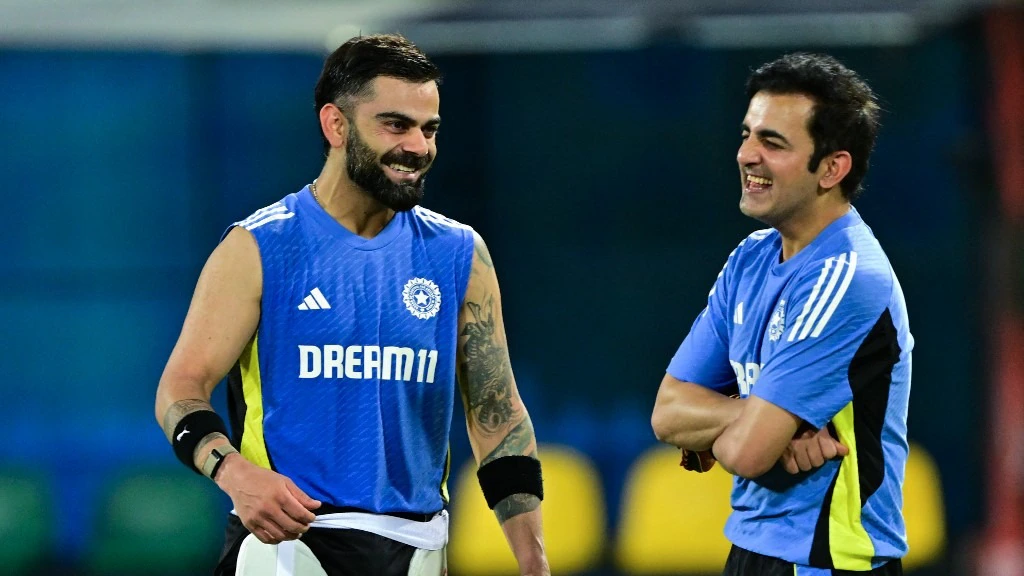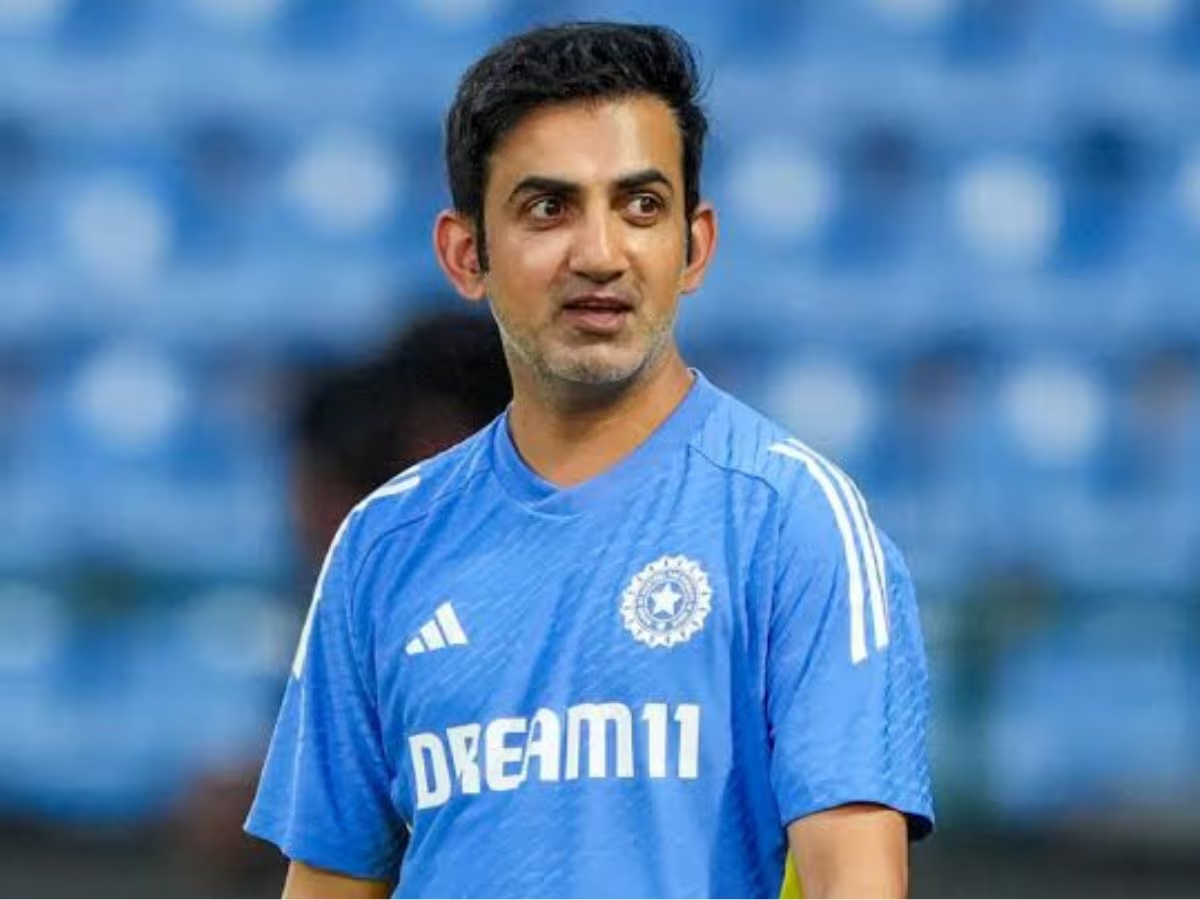
As the illustrious careers of Virat Kohli and Rohit Sharma enter their twilight, Indian cricket stands at a significant juncture. These two stalwarts have not only carried the hopes of a billion fans but have also redefined the standards of excellence on the global stage. Their impact has been monumental—Virat Kohli’s fiery aggression and unmatched consistency, paired with Rohit Sharma’s effortless artistry and strategic leadership, have left an indelible mark on the sport. However, every era has its sunset, and the cricketing world is now abuzz with discussions about what lies ahead for Team India.
In this transitional phase, one name has emerged prominently in cricketing circles: Gautam Gambhir. The former Indian opener and two-time ICC World Cup winner is no stranger to leading from the front, both literally and figuratively. Gambhir’s recent thoughts on revamping Indian cricket’s Test framework have sparked widespread interest, with fans and pundits speculating about his potential involvement in shaping the future of the game. His vision for a “Test reboot” is not just a response to the waning dominance of Test cricket in the T20 era but a bold strategy to safeguard its essence for generations to come.
The Kohli-Rohit Era: A Legacy of Greatness
Virat Kohli and Rohit Sharma have been synonymous with Indian cricket’s golden run over the past decade. Kohli’s tenure as captain was marked by a fearless approach, epitomized by his ability to lead from the front with the bat. Under his leadership, India achieved historic milestones, such as the first-ever Test series victory in Australia during the 2018-19 Border-Gavaskar Trophy. Kohli’s hunger for success was infectious, galvanizing the team into a formidable force capable of challenging the best in the world.
Rohit Sharma, on the other hand, brought a sense of calm to the team’s dynamics. Known as the “Hitman” for his prolific run-scoring, Rohit’s ascent to the captaincy showcased his astute cricketing mind and ability to handle high-pressure situations. His leadership was instrumental in bolstering India’s white-ball dominance while maintaining a steady hand in Test cricket. Together, Kohli and Rohit have set benchmarks that future generations will aspire to emulate.
However, as both players inch closer to the end of their international careers, questions about succession planning and the direction of Indian cricket have gained prominence. The transition from one era to another is never easy, and it requires a blend of visionary leadership, strategic reforms, and nurturing young talent. This is where Gautam Gambhir’s vision becomes pivotal.
Gautam Gambhir: A Leader with a Vision
Gautam Gambhir’s credentials as a player are beyond reproach. With over 4,000 runs in 58 Test matches and a career punctuated by iconic performances, Gambhir was a linchpin in India’s batting lineup during his prime. His contributions in pressure situations, such as his match-winning knock in the 2007 ICC T20 World Cup final and the 97 runs in the 2011 ICC Cricket World Cup final, underscore his ability to rise to the occasion.
Post-retirement, Gambhir has seamlessly transitioned into roles as a commentator, mentor, and politician. His unfiltered opinions on cricketing matters often make headlines, reflecting his deep understanding of the game’s intricacies. For Gambhir, Test cricket is not merely a format; it is the soul of the sport. He has been vocal about preserving its sanctity, even as the T20 format continues to dominate the cricketing landscape.
The Need for a Test Reboot
The advent of T20 leagues like the Indian Premier League (IPL) has revolutionized cricket, bringing financial prosperity and global appeal. However, this transformation has also led to concerns about the declining focus on Test cricket. Younger players, drawn to the glitz and glamour of franchise cricket, often prioritize white-ball formats, sidelining the grueling demands of the red-ball game. Gambhir has repeatedly highlighted this issue, calling for systemic changes to reignite interest in Test cricket.
Gambhir’s vision for a Test reboot is built on three pillars: enhancing domestic cricket, preparing players for overseas challenges, and fostering a culture that values resilience and adaptability. These elements, he believes, are essential for sustaining India’s dominance in the longest format of the game.
Strengthening the Domestic Structure
India’s domestic cricket system, anchored by the Ranji Trophy, has been the breeding ground for some of the finest Test players. However, Gambhir believes that the current structure needs to evolve to meet modern demands. He has proposed increasing the competitiveness of domestic tournaments by introducing higher stakes and better rewards for performers. This includes offering substantial financial incentives and creating pathways for domestic stars to transition seamlessly into the international arena.

Moreover, Gambhir advocates for a focused approach to identifying and nurturing Test specialists. In an era where all-format players are rare, having a dedicated pool of red-ball cricketers can ensure consistency and depth in the Test team. Gambhir envisions a robust scouting system that identifies promising talent early and provides them with tailored training and mentorship.
Preparing for Overseas Challenges
While India has been a fortress in home conditions, overseas performances remain a critical benchmark for any Test team. Gambhir has emphasized the need to prepare players for the unique challenges posed by pitches in Australia, England, South Africa, and New Zealand. To achieve this, he suggests longer preparatory tours, practice matches on similar surfaces, and collaborations with foreign coaching experts.
Gambhir’s focus on adaptability is rooted in his own experiences as a player. His memorable knocks in testing conditions, such as his 137 against New Zealand in Napier in 2009, exemplify the grit and determination required to succeed abroad. By instilling these qualities in the next generation, Gambhir aims to create a team that can excel in all conditions.
Fostering Mental Toughness
Test cricket is often described as the ultimate test of a player’s character. The format demands not only technical proficiency but also mental resilience. Gambhir has stressed the importance of psychological support for players, particularly during high-pressure situations. He envisions a support system that includes sports psychologists, mentors, and regular workshops to equip players with the tools to handle stress and setbacks.
Gambhir’s Role in Mentorship
As a mentor, Gambhir has already contributed significantly to Indian cricket’s ecosystem. His association with IPL franchises like Kolkata Knight Riders and Lucknow Super Giants has allowed him to work closely with emerging talents. Players like Prithvi Shaw and Rinku Singh have benefited from his guidance, showcasing their potential on the big stage.
In the context of Test cricket, Gambhir’s mentorship could prove invaluable. His ability to inspire confidence, coupled with his tactical insights, makes him an ideal figure to guide young players. Whether in an official capacity or as an advisor, Gambhir’s involvement could accelerate the process of building a formidable Test team for the future.
The Road Ahead: Challenges and Opportunities
The transition from the Kohli-Rohit era to the next generation will not be without challenges. India’s cricketing fraternity will need to strike a delicate balance between maintaining its competitive edge and embracing change. Gambhir’s ideas, though ambitious, will require the support of the Board of Control for Cricket in India (BCCI), selectors, and team management to materialize.
Public perception will also play a significant role in shaping the success of this transition. Fans, who have grown accustomed to the heroics of Kohli and Rohit, will need to rally behind the new faces of Indian cricket. Media narratives and social media discussions will influence the acceptance of this change, making it imperative to communicate the vision effectively.
Conclusion: A Vision Worth Embracing
Gautam Gambhir’s vision for a Test reboot represents a crucial step in ensuring the longevity and relevance of the longest format of cricket. His emphasis on resilience, adaptability, and strategic planning offers a comprehensive framework for navigating the post-Kohli and Rohit era. While the road ahead is filled with uncertainties, it also holds immense potential for redefining Indian cricket’s legacy.
As the cricketing world waits for the next chapter to unfold, one thing is certain: the passion for Test cricket will continue to thrive, thanks to the unwavering dedication of visionaries like Gautam Gambhir. His commitment to preserving the sport’s essence, while adapting to modern challenges, serves as a beacon of hope for fans and players alike. The dawn of a new era is on the horizon, and with Gambhir’s guiding hand, Indian cricket is poised to scale even greater heights.

